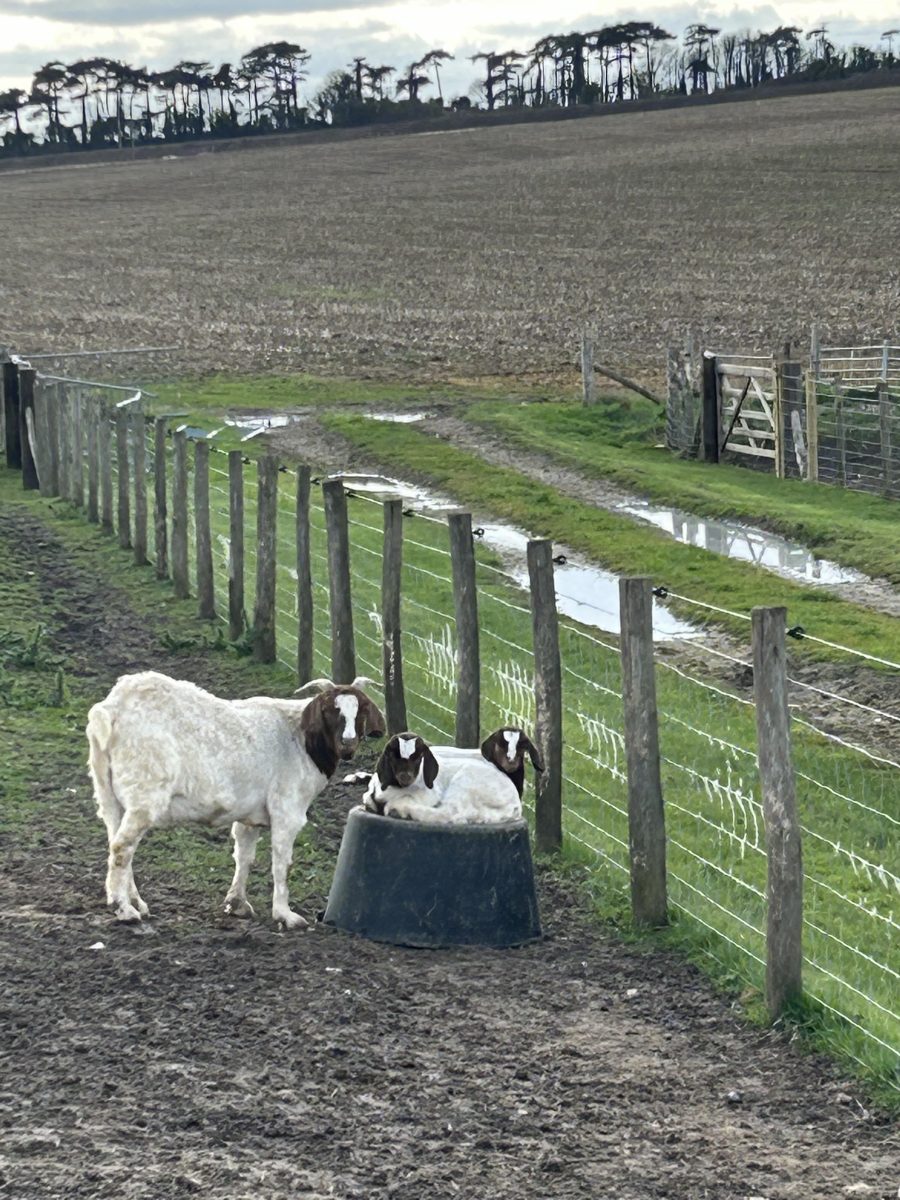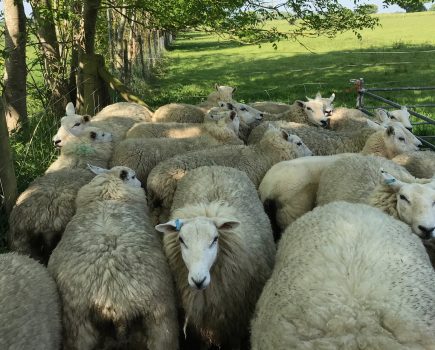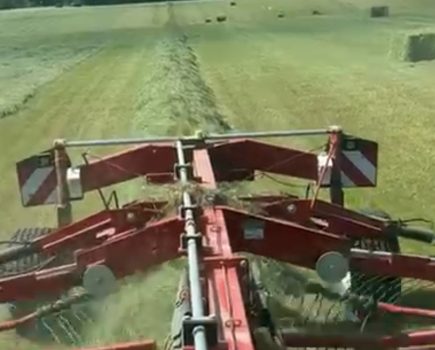The clocks have finally changed and the lighter evenings have arrived. The sun will not set before 6pm until October, yippee, it seems to have been a very long winter. Fingers crossed the sun will start to shine, although I suspect Mr Grumpy won’t be happy whatever the weather situation. The fertiliser is now on and the sprayer will be busy.
The grass is growing slowly, perhaps it needs a can of Red Bull. Lambing is now in full swing, and we still have Gary the orphan goat kid. Looks like he will keep Monty’s billy company throughout the winter.
This month has been quite trying for several reasons. Our neighbouring dairy farmer Ken Ledger (aged 70) passed away in early March. Ken’s family has successfully farmed in east Kent for many generations. Ken was a dedicated farmer who also enjoyed his outdoor sports and had recently enjoyed a skiing holiday in France. Ken will be greatly missed throughout the farming industry.
Meanwhile a friend of mine was recently admitted to hospital suffering from Sepsis but is fortunately now on the road to recovery, after a long battle. Interestingly it stemmed from a very small cut on her finger while she was feeding the cattle. She thought she had a slight cold and a little bit of a sniffle until a family friend told her to go and get it checked out. She was incredibly lucky that it was caught early by a blood test.
Farmers and labourers are at an increased risk of becoming infected, so any cuts should be cleaned thoroughly and covered. Infections caused by the nature of the work with livestock and soil, combined with the isolation or distance from medicines, antiseptics and cleaning agents, are key reasons why rural workers face increased risks.
Sepsis can also be caused by injuries caused by trauma or by illness. Sepsis doesn’t discriminate between young, old, male or female. A hard-hitting campaign has been launched to raise awareness of sepsis among rural workers. It encourages people to ”Be sepsis savvy – spot the signs and save lives”. It urges people in the countryside to increase awareness of symptoms and act quickly if they suspect they may be developing the disease.
The symptoms to watch out for are:
- Slurred speech or confusion
- Extreme shivering and/or muscle pain
- Passing no urine
- Ill feeling
- Skin mottled, discoloured or bluish.
Other symptoms can include:
- Rashes that don’t disappear when pressed
- Lethargy
- Vomiting, nausea, diarrhoea
- Fits/convulsions
- Red, painful swelling around a cut or injury.
Immediate medical treatment must be sought if these symptoms occur, otherwise potentially life changing conditions or death may result. Farmers are notoriously stubborn and don’t like to seek medical advice but if in doubt seek advice. It really could save your life.
This month also included the joys of farm assurance and crop assurance. The hours of ensuring that the correct paperwork was in place finally paid off. I find myself wondering if some of the questions are relevant; the broken needle policy that I adapted and printed out will stay in the file (unseen) for another year or until our next visit.
Personally, we have never had a broken needle left in an animal and if one is using the correct needle that is certified to medical standards it has been manufactured to bend and not break. Our vet, who is retiring at Christmas and has been practising for over 40 years, has never encountered a broken needle. Maybe we need to revisit some of the farm assurance paperwork.
Until next time stay safe and keep well.
Visit www.sepsistrust.org for more information
For more like this, sign up for the FREE South East Farmer e-newsletter here and receive all the latest farming news, reviews and insight straight to your inbox.







